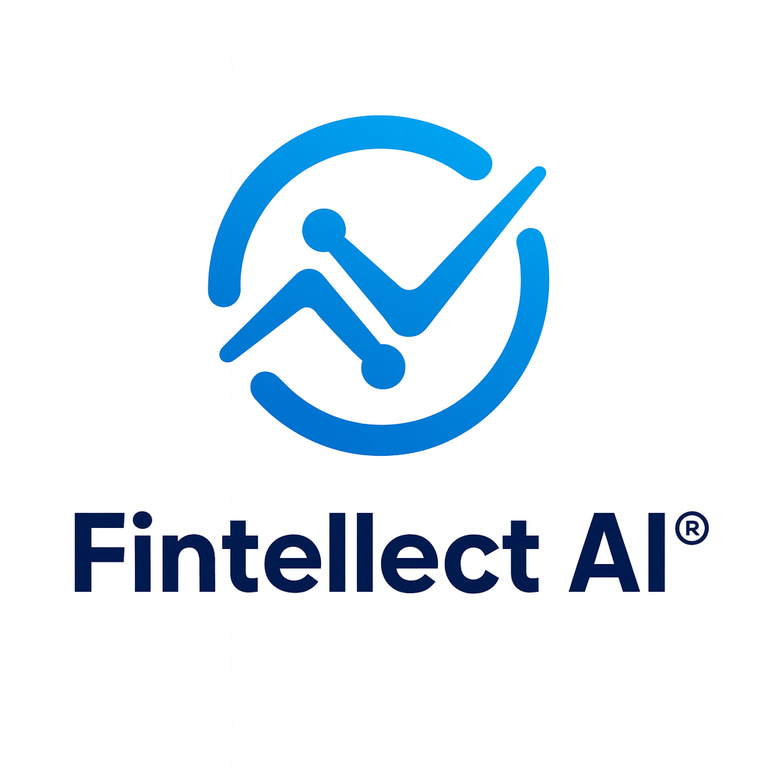The Financial Revolution: From Static to Smart- How AI is Reshaping Financial Software
Beyond Spreadsheets: How AI Eliminates Guesswork and Drives Smarter Financial Decisions
CFO INSIGHTS
Zhivka Nedyalkova
3/18/20254 min read


Beyond Spreadsheets: How AI Eliminates Guesswork and Drives Smarter Financial Decisions
A Look Back Before Moving Forward
Over the past two weeks, we have explored the growing power of AI in finance and the key areas where it is being implemented. In the first part of our series, we examined how AI is no longer a passing trend but a transformative force that enhances financial operations, improves decision-making, and unlocks new efficiencies. In the second part, we highlighted the critical areas where AI is already reshaping financial workflows, from fraud detection and risk assessment to algorithmic trading and automated financial reporting.
Yet, one fundamental question remains: How does AI compare to traditional financial software? While many businesses continue to rely on conventional financial tools, the limitations of these systems are becoming increasingly evident. Traditional software, though effective for specific tasks, lacks adaptability, real-time analytics, and predictive power—features that AI-driven solutions provide effortlessly.
Today, in the third part of our series, we will break down the core advantages of AI over traditional financial software and explain why AI is not just a step forward but a paradigm shift in financial operations.
How AI Surpasses Traditional Financial Software: A New Era of Finance
AI has already demonstrated its ability to redefine efficiency, accuracy, and scalability in finance. Below, we explore the seven major advantages AI holds over traditional financial tools.
1. Real-Time Insights vs. Static Reporting
Traditional Software Limitation:
Traditional financial software generates reports based on periodic data updates—often daily, weekly, or even monthly. This means financial decisions are made using outdated information that does not reflect real-time market shifts, cash flow changes, or unexpected expenses.
Example: A company relying on traditional financial tools may only get a profit-and-loss statement at the end of the quarter. If a sudden expense spike occurs in the middle of the month, managers might not detect it until weeks later, leading to poor financial planning.
✅ AI Advantage:
AI provides real-time financial insights, continuously analyzing data from multiple sources to detect trends, risks, and opportunities as they emerge.
Example: AI-powered financial dashboards update cash flow predictions in real time, alerting CFOs to potential liquidity shortages before they become a crisis.
💡 Why It Matters:
Businesses relying on static reports may miss critical warning signs. AI ensures constant financial monitoring, reducing risks and improving agility in decision-making.
2. Machine Learning and Adaptability vs. Rigid Predefined Rules
Traditional Software Limitation:
Traditional software operates on hard-coded financial models that require frequent manual updates to stay relevant. If economic conditions change, these models do not adjust automatically, making their predictions less reliable.
Example: A traditional credit risk assessment tool uses a fixed formula to evaluate applicants. If a new economic downturn occurs, the system may still approve risky applicants because it does not adapt to emerging trends.
✅ AI Advantage:
AI-powered systems use machine learning to continuously improve, identifying patterns and adapting to new financial trends without manual intervention.
Example: AI-based credit risk models refine their assessments in real time, learning from new borrower behaviors and adjusting risk scores dynamically to minimize defaults.
💡 Why It Matters:
While traditional software requires constant reprogramming, AI-driven solutions evolve autonomously, ensuring long-term accuracy and efficiency.
3. Speed and Scalability vs. Manual Processing
Traditional Software Limitation:
Most traditional financial systems rely on batch processing, meaning large volumes of transactions are processed at scheduled intervals instead of instantly.
Example: A bank using traditional software may take hours or even days to process international transactions, leading to delays in cash flow and financial reporting.
✅ AI Advantage:
AI processes vast amounts of financial data instantly, making it ideal for companies managing thousands of transactions per second.
Example: AI-driven payment systems process real-time transactions within milliseconds, ensuring faster financial settlements and improved liquidity management.
💡 Why It Matters:
Faster processing means better financial decisions, improved efficiency, and enhanced customer experience.
4. Automated Anomaly Detection vs. Reactive Fraud Management
Traditional Software Limitation:
Fraud detection in traditional software relies on preset rules and historical fraud cases—meaning it struggles to detect new, sophisticated fraud schemes.
Example: Many traditional fraud detection systems only flag suspicious transactions after they have been processed, leading to significant financial losses.
✅ AI Advantage:
AI uses anomaly detection and behavioral analytics to identify fraud patterns in real time, even if the fraud mechanism is entirely new.
Example: AI-driven fraud detection systems in banking block fraudulent transactions before they occur by analyzing real-time spending behaviors and recognizing unusual activity.
💡 Why It Matters:
Proactive fraud detection prevents financial losses rather than just mitigating damage afterward.
5. Predictive Analytics vs. Historical Data Analysis
Traditional Software Limitation:
Traditional financial tools focus on historical data, offering only a retrospective view of financial performance.
Example: A CFO relying on traditional software only sees last month’s revenue trends, making it harder to predict future sales accurately.
✅ AI Advantage:
AI-powered predictive analytics anticipate market shifts, cash flow fluctuations, and investment risks, enabling businesses to stay ahead of financial challenges.
Example: AI-driven forecasting models predict upcoming liquidity shortages, allowing businesses to adjust their financial strategies before crises hit.
💡 Why It Matters:
Traditional tools tell you what happened—AI helps you prepare for what’s coming.
6. Cost Efficiency and Resource Optimization vs. Labor-Intensive Workflows
Traditional Software Limitation:
Manual financial tasks require significant human oversight, leading to higher operational costs.
Example: Invoice processing in many companies relies on human accountants, increasing labor costs and processing time.
✅ AI Advantage:
AI automates repetitive tasks, reduces human error, and optimizes financial workflows, cutting operational expenses.
Example: AI-powered invoice processing automatically extracts, validates, and categorizes financial documents in seconds.
💡 Why It Matters:
Companies can redirect resources to high-value financial strategy tasks instead of repetitive manual work.
7. XAI and Explainability vs. Manual Error Checking and Miscalculations
Traditional Software Limitation:
Manual financial checks are time-consuming and prone to human error, often requiring additional audits and reconciliations.
Example: Accountants may miss miscalculations in financial reports, leading to incorrect forecasts or compliance risks.
✅ AI Advantage:
Explainable AI (XAI) provides transparent, data-driven justifications for its decisions, ensuring financial accuracy.
Example: AI-driven audit tools highlight why a financial forecast changed, providing CFOs with detailed insights instead of black-box calculations.
💡 Why It Matters:
AI doesn’t just automate—it enhances transparency and accuracy, building trust in financial decision-making.
The End of Traditional Financial Software?
Yes, with the ability to deliver real-time insights, automate financial processes, predict risks, and enhance scalability AI provides a clear advantage over traditional financial software.
While conventional financial tools still serve basic functions, their limitations in adaptability, speed, and predictive analytics make them inadequate for modern financial challenges. Companies that fail to transition to AI-driven financial solutions risk losing their competitive edge in an increasingly data-driven world.
In the next part of our series, I will explore the challenges, fears, and misconceptions surrounding AI in finance—addressing concerns about transparency, ethical risks, and regulatory compliance. Stay tuned!
